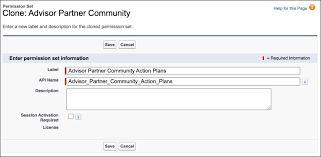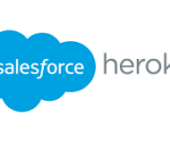Establishing Action Plans in Partner Communities
What is a community action plan?
A Community Action Plan serves as a vital document for prioritizing community needs, outlining a set of activities, and aiding Local and State governments in understanding community requirements.
What is the Salesforce Partner Community?
The Salesforce Partner Community is a dedicated portal designed and maintained exclusively for Salesforce partners. It serves as a platform for partners to manage their business activities, gain insights into best practices, and interact with Salesforce employees within a secure environment.
Enable action plan features in your partner communities by providing action plan templates and plans. Customize community home and record detail pages while creating and assigning user profiles for partner community users. Action Plans are accessible in partner communities equipped with an External Apps for Financial Services license or a Customer Community Plus for Financial Services license.

Create a Community User Profile for Action Plan Users
Generate a partner community profile with access to action plan templates and action plan objects.
Create a Permission Set for Partner Community Action Plan Users
Develop a permission set to grant partner community users access to action plan templates and action plans.
Update the Experience Cloud Home Page with Action Plans
Showcase action plan template and action plan lists on the partner community home page.
Update Community Record Detail Pages with Action Plans
Integrate action plan lists into Record Detail pages within communities.
What should an action plan include?
An action plan consists of seven key steps: setting objectives, assessing objectives, identifying necessary actions, determining evaluation methods, establishing a timeframe, identifying resources, finalizing the plan, and evaluating results.
What is the most important component of an action plan?
Action plans primarily encompass “what,” “who,” and “when.” They delineate the action steps (“what”) required to achieve goals, designate responsible individuals (“who”), and set projected completion dates (“when”). Crucially, action plans elucidate the “why” behind program goals.
Supported Salesforce Objects
Action plan templates (and subsequent action plans) can be created for various objects based on Salesforce configuration and available licenses. Target objects for action plan templates include Account, Assets and Liabilities, Business Milestone, Campaign, Card, Contact, Contract, Lead, Opportunity, and Custom Objects.
Action Plans are accessible in partner sites with an External Apps for Financial Services license or a Customer Community Plus for Financial Services license for financial services users. To make Action Plans available to partners, create and assign user profiles for partner sites users. Simplify the process by customizing your site home and record detail pages.
Action Plan Templates Vs. Action Plans
When working with Action Plans, begin by creating action plan templates. Understand the distinction between an action plan template and an action plan:
- An action plan template captures repeatable tasks for a specific engagement type.
- An action plan is a run-time instance of the template, automating predefined tasks for each engagement.
What’s Inside an Action Plan
Action Plans and templates may include various items:
- Document Checklist Item: Standardize and automate document tracking and approval steps.
- Task: Utilize Salesforce tasks for to-do lists, keeping track of deals and accounts.

How Action Plan Templates and Action Plans Work Together
In an action plan template, assign tasks to individuals, roles, queues, or the plan creator. When creating an action plan from a template for a specific target record, items are assigned accordingly. Users interact with tasks using standard Salesforce interfaces, recording status information through the Action Plans details view. Target records display related action plans.
Content updated October 2022.
🔔🔔 Follow us on LinkedIn 🔔🔔








